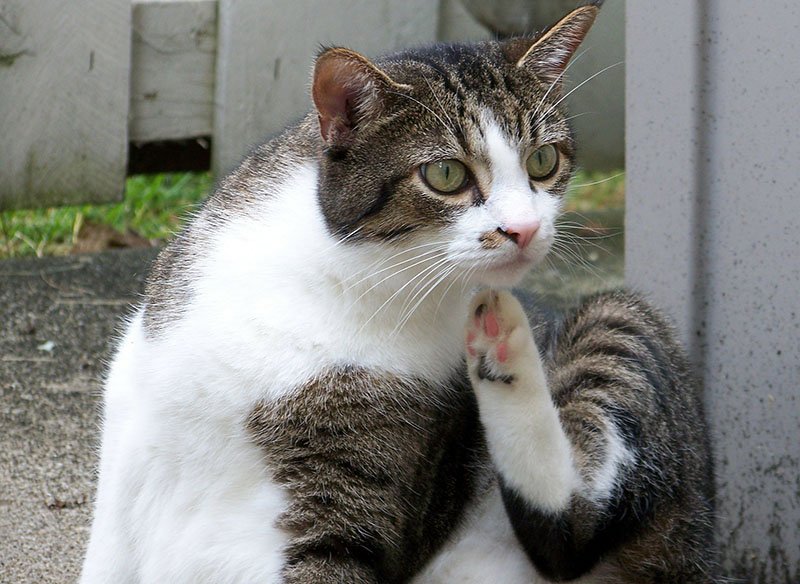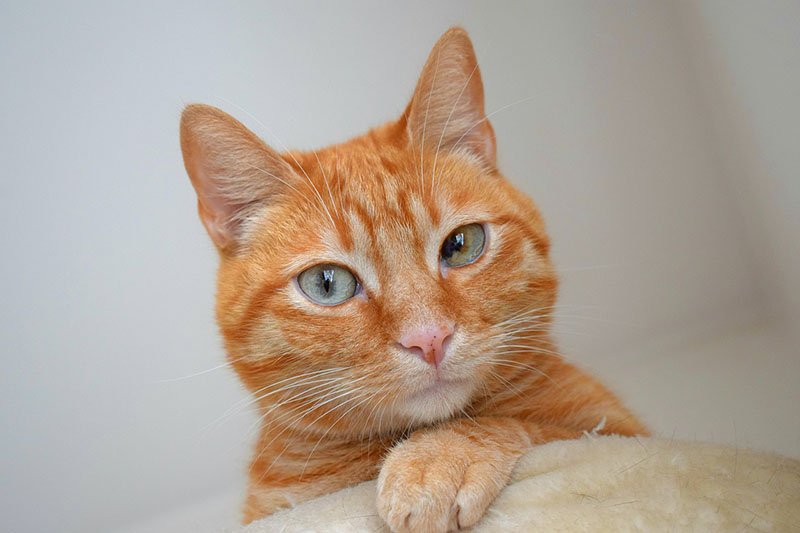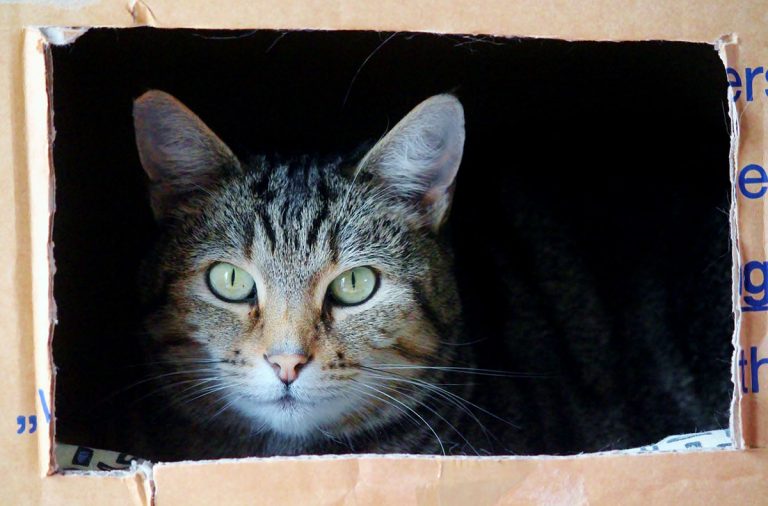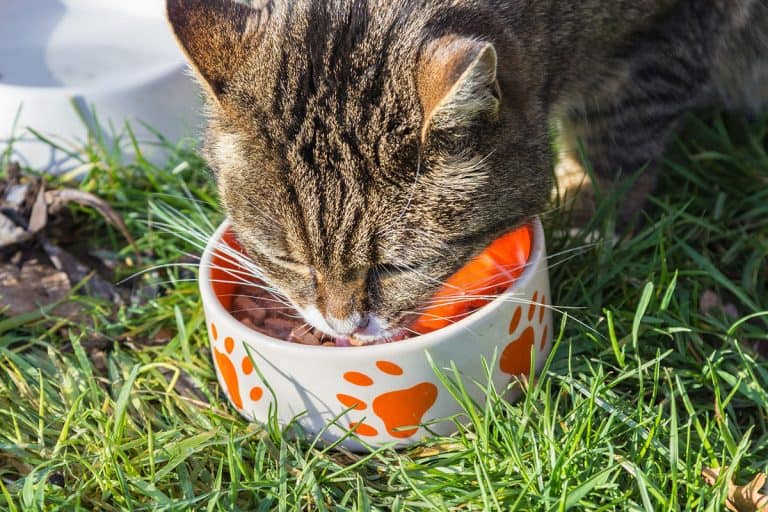Fleas are a common pest for cats and their owners. These nasty little parasites nestle in your kitty’s fur, where they lay eggs and feed on your cat’s blood. Besides being itchy and painful for your cat, fleas can move on to infest your entire household and become a real health risk for your family and your cats. But can cats die from fleas?
Read our guide to learn more about these flightless insects, how to prevent and take care of a flea infestation, and the real risks fleas pose to you and your furry felines.
DISCLAIMER: This post may contain affiliate links. If you click one of these links and decide to make a purchase, we may receive a small commission. This comes at no extra cost to you and helps to keep the site alive and up to date. If you want more information, please review our Privacy Policy. Thank you for your support!
How Do Cats Get Fleas?
Cats can get fleas in a number of ways. Most commonly, they catch them from another animal, like a neighboring pet or a rodent they cross paths with, or you unknowingly carry them into the house on your clothes. Outside cats tend to get fleas more often, which is just another reason why it’s safer to raise your kitties as inside cats.
Nevertheless, inside cats can and do get fleas. One female flea can lay up to 500 eggs in her lifetime, so prepare yourself with a good prevention and eradication plan. The more you can do to prevent a full on infestation, the better.
Related Post: Is Pet Insurance Worth It For Indoor Cats?
Is pet insurance worth it for indoor cats? Read this guide to learn about pet insurance for cats and calculate if it is really worth it for your indoor cat.How To Prevent A Flea Infestation
The best way to prevent a flea infestation among your cats is to implement a strict routine of checks and prevention measures. Use these tips to keep your household, and your pets, as unattractive to fleas as possible.
Flea Combs
A flea comb is a fine-tooth comb that you can use to remove fleas (both dead and alive) and flea eggs from your cat’s fur. Run the comb through your cat’s coat and make sure you get as close to the skin as you can without hurting her. Flea combs tend to be rather sharp. Your cat won’t appreciate you digging into her skin with it too much.
Tap any dark bits you find out of the comb over a damp paper towel. If they turn a reddish brown on the wet paper, they are indeed (bits of) flea and it is time to spring into action.

Flea Treatment
There are a host of different options available for round-the-clock flea prevention. Special anti-flea collars, spot-on treatments, pills, powders, sprays. Which treatment will work best for you depends on your personal situation and preferences. In a multi-pet household, it is likely more convenient to give them all a flea collar instead of keeping track of who needs what pill when.
Personally, I believe in minimizing my cat’s exposure to chemicals. Especially ones of the killing-kind. So I tend to go for the spot-on treatments, like Advantage or Advocate. You apply these once every few weeks in the nape of your cat’s neck. It then works to kill all fleas, eggs and larvae from her body and her environment. Some formulas also attack other parasites, like tapeworms, preventing you from having to feed your cat yet another pill.
Whatever treatment you choose, make sure that you keep up with it and check its effectiveness every time you use it. Despite the many forms the treatments come in, they all use very similar ingredients. And some formulas have been around for decades. Unfortunately, this means that more and more fleas are becoming more and more resistant to these products. If your old and proven flea treatment doesn’t seem to be working that well anymore, you could be right. Time to change to a newer one.
Related Post: Is Dog Food Bad For Cats?
Is it okay to give your cat some of the dog's food, or is dog food bad for cats? Read this to answer all questions about feeding pets in a multi-pet household.Clean Cat Beds
The first place you will find fleas, besides on your cat, is likely going to be her favorite sleeping spot. Eggs will drop from her fur and hatch in the warm comfort of the pillows. From there they will start to spread throughout the rest of the house. Stay one step ahead of them by keeping your cat beds clean and pest-free.
Wash anything that can be washed at the highest temperature possible at least once every two weeks. This is about the time it takes for a flea egg to hatch and grow into a flea. With a bi-weekly cleaning routine you will catch and remove all of them before they can go off and procreate.
Keep Rodents Away
This is good advice in general, but especially pertinent to preventing a flea infestation. Mice and rats are perfect carriers for both fleas and diseases, so you want to keep them away from your pets and family at all cost. Store food in closed containers, don’t leave a full garbage can sitting around your kitchen and collect your trash somewhere away from your house.
If your cat is an outside dweller or a farm cat that regularly catches mice, make sure she has had all of her vaccinations and be extra vigilant in your flea prevention efforts.
Signs Your Cat Has Fleas
Even when keeping on top of everything, it can be difficult to spot the beginnings of a flea infestation. Keep an eye on your cat and watch out for the following signs.
- Excessive scratching and grooming
The first and most obvious sign of a possible flea infestation is that your cat starts scratching more than usual. Some cats are actually allergic to flea saliva and can have pretty severe reactions, like biting at their belly and paws. Other cats can be more zen about it and only show some increase in grooming behavior.
- More shedding
As your cat starts to up her grooming game, she will also start to shed more. You will start finding more clumps of fur on the floor, in her cat bed, and even between her toes. In fact, in bad cases you might suddenly realise that the entire room is covered in cat hair.
And you just cleaned two days ago. How is that possible?
Fleas.
- Increase in hairballs
A logical consequence of the increase in scratching, grooming and shedding is that your cat ingests more hair and produces more hairballs. In extreme cases these hairballs can lead to constipation, or even obstipation. Once you start finding more hairballs around the house, check the litter box to make sure your cat is still pooping regularly.
- Matte-looking coat
As a flea infestation gets worse, your cat’s fur may start to look more matte and scruffy. A feline’s coat is supposed to be clean and shiny. An unkempt appearance is often a sign that something is wrong, but luckily one of the easier things to spot. Also keep an eye out for scabs or sores. These are signs that things are getting worse and may make your cat more vulnerable to other infections.
- Depression
Being in prolonged discomfort from a flea infestation can have a noticeable effect on your cat’s demeanor. She may even get depressed. A cat with the blues is more likely to retreat to a dark corner, shy away from human attention and sleep more.

What To Do If Your Cat Has Fleas
Step 1
Administer anti-flea treatment immediately. If you have already done this in the two weeks prior to discovering the infestation, it likely means the fleas have become resistant to the treatment. Contact your vet and ask them what treatment they recommend.
Step 2
If your cat is experiencing a lot of discomfort, or the infestation is very bad, you can consider giving her a bath and washing her fur with an anti-flea shampoo. Obviously, not all cats are going to be very happy about this and I don’t recommend doing this unless your cat’s on board with it.
However, if you have a long-haired cat it is definitely worth getting them accustomed to regular baths from an early age. Not only does it help to keep their coat clean and shiny, it also greatly reduces the stress of dealing with a flea infestation when it happens.
Step 3
Wash your cat’s bedding and blankets at a high temperature. Do the same with your own clothes, bedding and cushion covers that your cat likes to rest on. Put more delicate things that can’t resist high temperatures into a storage bin or a heavy duty garbage bag and close it air-tight. Leave it unopened for at least 4 weeks to make sure all the fleas, larvae and flea eggs have perished. Then take it all out and give it a wash at normal temperatures before wearing it again.
Step 4
Clean off all open surfaces with detergent. Thoroughly vacuum your floors, carpets, curtains, sofa and other furniture. Don’t skip the corners or the skirting boards! If fleas can’t immediately find a pet to latch on to, this is one of their favorite places to hide.
Step 5
Observe your cat’s demeanor and check her coat every couple of days. Remove any remaining fleas and eggs you can find. Their numbers should decrease rapidly and your cat should start to feel better within a matter of days.
Step 6
If you don’t see any improvement after two weeks, it is time to take your cat to the vet’s office for a check-up. Perhaps the fleas have become resistant, attracted another parasite or left your cat vulnerable to a more serious disease.
Risks Associated With Fleas
If left untreated, a feline flea infestation can become a serious and difficult-to-manage problem. Not just for your cat, but for you and your family. Let’s go over the most important risks attached to your cat having fleas.
Discomfort
The most obvious and probably least worrisome risk of dealing with an infestation of fleas is the discomfort that it brings. Even though fleas can’t survive on human blood, they won’t shy away from trying the buffet when given the chance. If you like to cuddle and share a bed with your beloved kitty (who doesn’t?) chances are you’ve experienced an itchy flea bite or two. Imagine what your cat is going through being covered with them. Sad kitty!
On top of that, it can become a real drag real fast to realise every morning that the cute top you planned on wearing today is locked away in a bin, literally waiting for fleas to die on it.
Home Infestation
Forget about your clothes for a minute. What about your furniture? Your bed, your closet, your bookshelf, that junk cabinet in the corner, your baby’s crib, your kids’ toy box… All places for fleas to hide or drop their eggs, waiting for their next chance to hitch a ride on the feline ferry and start this circus all over again. The more you let a flea infestation get out of control, the harder it will become to eradicate the problem.
Human Health Risks
Fleas can carry bacteria and diseases that can infect humans as well as animals. One common bacteria that is spread through flea bites is bartonella. It can also be passed from your cat to you through a scratch of their nails, which is why the resulting disease, bartonellosis, is also referred to as cat scratch disease.
Flea bites can also put you at risk of catching rickettsia, a type of bacteria that causes spotted fever and, in rare cases, typhus. Elderly and immunocompromised people run a greater risk of getting ill from flea bites and cat scratches, but any household should be aware of the possible risks.
Feline Health Risks
Just like humans, cats can catch all sorts of diseases from fleas, like bartonellosis, but also the plague. Prairie dogs are known carriers of this medieval disease. So if you live in an area with prairie dogs and your cat likes to wander outside, be sure to inform your vet of this risk. Plague often presents with an abscess on the lymph nodes under the jaw and might be mistaken for a more innocent infection if your vet isn’t fully informed.
Another, more common, infection that often co-occurs with a flea infestation are tapeworms. Fleas carry the larvae of the tapeworm onto your cat’s fur. She then ingests them when grooming herself and ends up with both tapeworms and fleas. It is generally safe to assume that if your cat has fleas, she also has tapeworms, and if she has tapeworms, she also has fleas. Always treat for both.
As we’ve explained, fleas survive by biting your cat and drinking her blood. When a flea infestation gets out of hand, your poor cat won’t be able to keep up with all those little buggers wanting a piece of her and becomes anemic. Anemia prevents your cat from getting enough oxygen to her organs and she will start wasting away, gasping for air along the way. This can happen rather quickly too and, if left unattended, it will mean the death of your cat.
Conclusion
So, long story short, cats can indeed die from fleas. But they don’t have to with a solid routine of flea comb checks, regular treatment and some rigorous vacuuming. Your healthy cat will thank you for your hard work.












